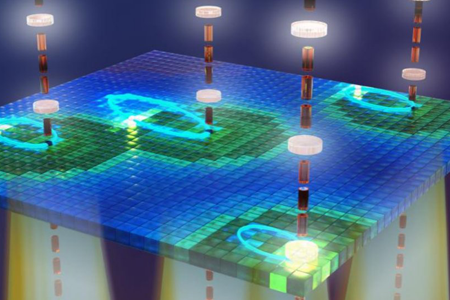Physicists Add 11 Colors To The Rainbow By Ripping Apart Atoms.
They’re fucking up my box of crayons! Physicists have dared defy the contents of making a children’s room and my underwater unicorn dungeon by generating eleven new hues.
Gizmodo:
True, the pink is a lie. But a UC Santa Barbara research team has honestly just generated eleven new hues using lasers and ion cascades.
The team created the new colors by aiming a pair of lasers–one high-frequency, the other low-frequency–at a slab of semiconductor material, a gallium arsenide nanostructure. The high-frequency beam separates an electron from its host atom, generating what’s known as an exciton (a bonded pair consisting of a negatively-charged electron and a positively-charged host). The powerful, low frequency wave then accelerates the freed electron, which goes crashing into the electron-less atom in front of it. Since the electron has extra energy from the acceleration when it recombines with the host atom in front of it, that energy is radiated as light. Previously unseen frequencies of light.
While the general public might not be ready yet to comprehend the color blorange, this technique could prove quite useful in high-speed data transfers. As Ben Zaks, a UCSB doctoral student in physics and the paper’s lead author, explained to Science Daily,
Think of your cable Internet. The cable is a bundle of fiber optics, and you’re sending a beam with a wavelength that’s approximately 1.5 microns down the line. But within that beam there are a lot of frequencies separated by small gaps, like a fine-toothed comb. Information going one way moves on one frequency, and information going another way uses another frequency. You want to have a lot of frequencies available, but not too far from one another.
High-speed data? Who gives a rootin’ tootin’ bag of shit about that? If we have to do this, I want a new color for my Mike Tyson’s Punch-Out coloring book.




